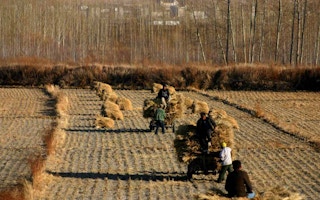Be ready for climate hazard in a new form – the compound heat waves that hit you, leave you, and come back again.
As the world warms, say US scientists, the risk of economically devastating, physically debilitating and potentially lethal extremes of heat will multiply, and in unexpected ways.
Researchers picture a world in which the most vulnerable – those already ill or elderly, housed in substandard buildings in crowded cities – are laid low and gasping by several days of extreme heat. Even if the temperatures drop a little, the buildings in which they live will still “store” heat to intolerable levels.
And then, unexpectedly, the extremes of heat return. Hospitals could be overwhelmed. Electric grids might experience overload. Harvests could wither. And the weakest could dehydrate and die.
“Averaged over time, heat waves are the most deadly type of disaster in the United States, in addition to causing many emergency room visits, lost working hours and lower agricultural yields,” said Jane Baldwin of Princeton University in the US.
“However, if you look at the deadliest heat waves in Europe and the United States, many have more unusual temporal structures with temperature jumping above and below extremely hot levels multiple times.”
Climate scientists have repeatedly warned that as the planet warms overall, the number of places where potentially deadly heat waves will hit will inevitably rise.
“
Averaged over time, heat waves are the most deadly type of disaster in the United States, in addition to causing many emergency room visits, lost working hours and lower agricultural yields.
Jane Baldwin, research fellow, Princeton University
If humans go on burning fossil fuels at ever-increasing levels, then heat waves usually experienced once a century could return every few years, to become the “new normal.”
By 2100, most people on the planet could be at risk some of the time as heat extremes become more severe, and more frequent.
In some parts of the world, the combination of high humidity and high temperature really could kill after a few hours, and new research has started to assess the probability of potential famine, simply because devastating extremes of heat could endanger crop yields on two continents in the same year.
Gauging probabilities
Heat extremes can kill – the 2010 heat wave in Russia is estimated to have caused around 56,000 extra deaths – and US scientists recently counted 27 ways that sweltering heat can claim lives and devastate families.
The Princeton study, in the journal Earth’s Future, is a preliminary look simply at the probabilities of back-to-back heatwaves. Policymakers, city authorities and medical chiefs need to know what new hazards global heating can bring, and the study is, the scientists say, just a first step.
But it identifies the precise problems that come with severe temperatures, especially for the already vulnerable, even in the world’s richest cities, such as New York.
“Surveys of low income housing in places such as Harlem have found that after a heat wave has ended, temperatures indoors can remain elevated for a number of days,” Dr Baldwin said. A swift return of the big heat could multiply the stresses.
And her co-author Michael Oppenheimer said: “We want to know how the effects of compound heat waves will differ from – and amplify – the already severe consequences for human health, infrastructure stability and crop yield that we see from single event heat waves.”
This story was published with permission from Climate News Network.










